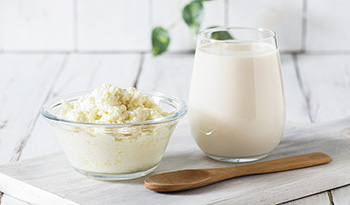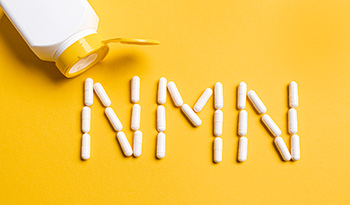Healthy Back to School Habits: A Guide For Kids, Teens, + Parents

Setting healthy routines and rhythms at the start of a school year benefits the entire family, including children, teenagers, parents, and all caregivers. Children thrive with routine, as it helps promote an atmosphere of stability and dependability while building confidence, independence, social skills, teamwork, and social-emotional development.
Building habits that ensure basic needs like sleep and proper nutrition are met doesn’t just help us feel our best — it actually supports better academic performance, mental health, and immune function. Let’s explore how to build a healthy back-to-school routine that prioritizes quality sleep, proper nutrition, and age-appropriate hygiene habits to ease the transition back to school and ensure a successful academic year.
Start With A Consistent Sleep Schedule
Everything starts with sleep. All of us — adults and children — need consistent, adequate sleep to support growth and development, cognitive function, healthy immunity, mood, and overall health. Children and teenagers need between 8 and 13 hours of sleep every night, depending on their age.
- Preschool children (3 to 5 years): 10 to 13 hours of sleep, including naps
- School-age children (6 to 13 years): 9 to 12 hours of sleep
- Teenagers (14 to 17 years): 8 to 10 hours of sleep
Longer summer days often lead to later bedtimes during the summer months. Before early school mornings jolt your family in a harsh reality check, transition yourselves to a school bedtime routine one to two weeks before school begins. Begin laying out clothes for the next day and implementing a restful, quiet time in the evening as you gradually shift bedtimes earlier.
An evening sleep routine helps signal to the body that it’s time for sleep. Incorporate some of the following steps into your evening routine to help ease busy bodies and minds into restful slumber:
- Avoid screens 1 to 2 hours before bedtime: blue light from phones, tablets, and televisions can interfere with the body’s circadian rhythm, or the sleep-wake cycle.
- Take an evening bath or shower: Soak in a relaxing Epsom salt bath to wind down from a busy, active day.
- Choose bedtime snacks wisely: Some foods, like oatmeal (which contains tryptophan), cherries, eggs, and walnuts (which contain melatonin), can support a restful night’s sleep. Avoid snacks high in fats, sugar, or spices, which may be difficult to digest or cause indigestion before bed.
- Enjoy a cup of herbal tea: Herbal teas like chamomile or lemon balm offer calming benefits for children, teens, and adults.
- Try targeted supplements for better sleep: Natural supplements that may support restful sleep include magnesium and melatonin.1,2
Build A Balanced Morning Routine
No one likes the feeling of being rushed or stressed in the morning. A little prep and organization the night before goes a long way toward a happier start the next day. Build a balanced morning routine by completing these tasks the evening prior:
- Pack lunches the night before.
- Clean and fill water bottles with fresh water, then place them in the refrigerator.
- Make a list of all items you’ll need to take with you the next morning. In the morning, check the list before leaving the house to ensure you’re not forgetting anything.
- Fill purses, bags, or backpacks with completed homework, important paperwork, or items needed for the next day. Have bags and backpacks ready and waiting by the door.
- Decide on the breakfast menu for the next morning.
- Lay out clothes for the next day.
Encourage older children to help prepare for the next day through age-appropriate tasks, such as helping to pick out clothes and making lunches. This lightens your load and encourages kids to become more confident in their budding independence.
Focus On Nutritious Meals + Snacks
Nutrition helps fuel your family’s day, supporting their success at school or work. Balanced meals and snacks contain all key macronutrients bodies need to grow and develop — protein, carbohydrates, and fat — as well as micronutrients like vitamins and minerals. Fiber, which is found in plant-based foods like fruits and veggies, is essential for supporting balanced blood sugar levels, consistent energy, and healthy digestion.
When packing lunches or grabbing after-school snacks, aim for real, whole foods over packaged or processed foods. When convenience is key and a packaged convenience snack is on the menu, choose those that are low in added sugar and sodium and contain real food ingredients that you recognize. Look for these characteristics when shopping for healthy snack bars for children:
- At least 2 to 3 grams of fiber
- At least 2 to 3 grams of protein
- Less than 8 grams of added sugars, ideally from fruit
- Avoid those without protein or fiber that are high in added sugars
Healthy Breakfast Ideas
Breakfast is the most important meal of the day, providing energy to start the day off strong and supporting better blood sugar levels throughout the morning. A healthy breakfast includes quality protein, a wholesome carbohydrate, and, ideally, a fruit or vegetable as well.
Protein is key at breakfast for supporting energy levels, satiety, and blood sugar balance. Better breakfast protein options include legumes, eggs, Greek yogurt, tofu, chia seeds, and smoothies made with a high-quality protein powder.
Carbohydrates are the body's preferred energy source, helping fuel the brain and muscles. Better breakfast carbohydrates include whole grains, oats, starchy vegetables like sweet potatoes, and fruits like berries, apples, kiwis, oranges, and bananas.
Fats also serve as an energy source for the body. Better breakfast fats include nuts like almonds, walnuts, and pecans, as well as seeds like pumpkin, chia, and hemp seeds. Fats are also found naturally in animal proteins like eggs and dairy products.
Try some of these easy, balanced breakfasts to power up your morning:
- Eggs scrambled with spinach, avocado toast, and blueberries
- Smoothie made with protein powder, spinach, banana, berries, chia or flax seeds, and nut butter
- Oatmeal topped with almond butter, pumpkin seeds, blueberries, and cinnamon
- Overnight oats made with oats, chia seeds, dairy-free milk, cinnamon, protein powder, and maple syrup
Lunch and Snack Prep Tips
A healthy, balanced lunch supports consistent physical and cognitive energy levels, helping prevent the afternoon energy crash. Aim to include a high-quality source of protein, carbohydrate, and fiber-rich fruits and vegetables at lunchtime.
Avoid adding high-sugar foods like candy or desserts to school lunchboxes. These foods lack the nutrients children and teenagers need to fuel and sustain cognitive function and maintain healthy energy levels throughout the day. High-sugar foods provide a quick burst of energy followed by an energy crash, which can impact learning and focus.
For a healthier sweet treat, aim to include hydrating fruits like strawberries, sliced grapes, oranges, apple slices, or kiwi. Fruits offer naturally sweet energy and hydration — and provide a boost of immune-supporting vitamin C.
Try some of these healthy lunch ideas:
- A bento box style, such as turkey slices, whole grain crackers, olives, cucumber, and sliced grapes
- “Chickpea of the Sea” wrap or sandwich that includes chickpeas (garbanzo beans) mashed with mustard and avocado, mixed with diced pickles, carrots, and celery, served with lettuce and a side of fruit
- Homemade soup made with beans, lentils, and/or your favorite protein, along with diced vegetables, broth, and seasoning
- Quinoa salad with diced vegetables, chickpeas, avocado, and fresh lemon
- Nourish bowl made with brown rice, beans, vegetables, sauerkraut, and your favorite salad dressing
- Tortilla and hummus roll-ups, cucumber, carrot sticks, pistachios, strawberries, and cheese slices
- Leftovers from last night’s dinner!
Explore more healthy lunch recipes on the iHerb Wellness Hub!
Remember, when packing a healthy lunch, what’s inside matters — but what holds it all together matters, too. Stainless steel lunchboxes, stainless steel reusable water bottles, and reusable silicone snack or sandwich bags are healthier for you and better for the environment than plastic or one-time use options.
Involving Kids in Meal Prep
To help minimize picky eating or food waste, involve children in meal prep. Older children can help prepare meals and pack their lunchboxes, while younger children can participate by helping plan the weekly menu and assisting with grocery shopping. Discussing snack and meal preferences as a family helps guide menu planning so kids look forward to their meals and waste less food.
Encourage Movement Throughout The Day
Children ages 6 to 17 need at least 60 minutes of moderate-to-vigorous intensity physical activity every day, according to the Centers for Disease Control and Prevention (CDC).3 Keep in mind, this is a minimum — movement and activity, particularly outdoors, is essential and beneficial for growth, development, and emotional-mental regulation. Walking to school, joining a sports team, or participating in after-school activities and programs can encourage regular physical movement.
In addition to dedicated activity time, aim to make movement a lifestyle habit. Encourage kids to get up and be physically active 5 to 10 minutes for every 30 minutes of sitting. Involving children in gardening, household tasks, and family walks encourages a lifestyle of movement and good health.
One tip for limiting screen time is to focus on “earned screen time”. Earned screen time involves creating a list of tasks that a child or teenager must complete before they can watch television or play games on a screen. Some families use the “high-five” approach, in which kids complete five key daily tasks and then give a parent or caretaker a high five upon completion. A high-five list could include:
- Completing homework or home education
- Drinking a glass of water
- Eating a healthy snack
- Spending time outdoors or being physically active
- Tidying up a bedroom or completing a chore around the house
Completing these items earns kids a set amount of screen time as deemed appropriate by parents or caretakers. The high-five approach also ensures that basic needs, habits, and activities are completed before watching television or playing games on screens.
Create A Productive Homework + Study Environment
Dedicate a specific area of the home for learning and homework that is free of distractions. Children focus more easily when they have a clean, familiar place to complete their homework or home education. A dedicated space helps create a rhythm that is safe and predictable, allowing children to focus on their education. Try using a daily rhythm chart for older children who have tasks to complete each school day or for after-school responsibilities like musical instrument practice or reading.
Support Mental Health + Social Well-Being
Mental health and social well-being are essential for all of us. Establish daily relaxing family routines so kids have reliable time for conversation, sharing, and comfort. Family activities that support mental health and allow time for reflection include:
- screen-free family meals
- family after-dinner walks
- screen-free car rides
- bedtime stories and conversation
Opportunities for peace and quiet at the end of the day, in particular, help relax children, giving them space to ask questions or share about their day. Listening to calming music and reading books that display good morals, character, healthy habits, and positive role models can foster social well-being and improve mental health.
The greatest predictors for emotional well-being in children include parental sensitivity and having a secure paternal attachment.4 Children with a strong attachment to their parents and a healthy home environment generally have greater emotional security and self-esteem and are resistant to negative peer influence.5 By building a strong home base and family connections, you cultivate healthy social connections, kindness, and positive peer support in your children.
Practice Good Hygiene + Illness Prevention
Cold and flu season follows closely on the heels of back-to-school season. Practicing good hygiene both at home and away helps prevent illness. Teach your kids to cover coughs and sneezes and always wash their hands before eating at school, work, and home for better health and hygiene. Additionally, make washing hands a habit when you return home from work, school, or any outing during the day. When handwashing isn’t an option, hand sanitizer can help kill illness-causing bacteria.
Removing shoes upon entering the house and changing from day clothes into home clothing also helps prevent the spread of germs. Lastly, designating an area where bags, purses, and backpacks can be organized — instead of placing them on counters or tabletops — helps keep the home a cleaner space.
Support Health With Kid-Friendly Supplements + Immune Support
A regular healthy diet is the foundation for supporting overall health and immune system functioning. Aim to consume a diet rich in whole foods like fruits, vegetables, nuts, seeds, whole grains, herbs, legumes, and quality proteins. And be sure to stay well hydrated.
A daily multivitamin or other key children’s health supplements can help fill nutritional gaps, especially for picky eaters or kids with restricted diets. Key supplements to consider for immune system support include vitamins C and D, omega-3s, zinc, probiotics, and elderberry.
- Vitamin D: Vitamin D supports bone health and immune system function, which is important for children who spend long hours indoors at school and are involved in group activities with other children.6
- Omega-3s: Omega-3 fatty acids, like DHA and EPA, may support focus, memory, and brain development in growing minds.7
- Probiotics: Probiotics support gut health and may reduce the number of sick days during the school year.8
- Zinc and Vitamin C: Zinc and vitamin C may provide added support during cold and flu season.9,10
- Elderberry: Elderberry is rich in antioxidants that support immune health.11
Always consult your child’s pediatrician before starting any new supplement regimen.
Takeaway
Creating healthy back-to-school habits is one of the most powerful ways to support your child’s success — both inside and outside the classroom. From prioritizing sleep and balanced nutrition to fostering physical activity, mental well-being, and good hygiene habits, these strategies help build a strong foundation for learning, growth, and resilience.
Setting new rhythms and routines takes intentionality and time. But with consistency, these healthy habits will ease the transition into the school year and nurture lifelong habits that provide long-term and lasting health benefits.
References:
- Cruz-Sanabria F, Carmassi C, Bruno S, et al. Melatonin as a Chronobiotic with Sleep-promoting Properties. Curr Neuropharmacol. 2023;21(4):951.
- Rawji A, Peltier MR, Mourtzanakis K, et al. Examining the Effects of Supplemental Magnesium on Self-Reported Anxiety and Sleep Quality: A Systematic Review. Cureus. 2024;16(4).
- Child Activity: An Overview | Physical Activity Basics | CDC. Accessed August 5, 2025.
- Heeman EJ, Forslund T, Frick MA, Frick A, Jónsdóttir LK, Brocki KC. Predicting emotion regulation in typically developing toddlers: Insights into the joint and unique influences of various contextual predictors. Int J Behav Dev. 2024;48(5):398-410.
- Murphy TP, Laible D, Augustine M. The Influences of Parent and Peer Attachment on Bullying. J Child Fam Stud. 2017;26(5):1388.
- Mansur JL, Oliveri B, Giacoia E, Fusaro D, Costanzo PR. Vitamin D: Before, during and after Pregnancy: Effect on Neonates and Children. Nutrients. 2022;14(9).
- Dinicolantonio JJ, O’keefe JH. The importance of marine OMEGA-3S for brain development and the prevention and treatment of behavior, mood, and other brain disorders. Nutrients. 2020;12(8):1-15.
- Mazziotta C, Tognon M, Martini F, Torreggiani E, Rotondo JC. Probiotics Mechanism of Action on Immune Cells and Beneficial Effects on Human Health. Cells. 2023;12(1):184.
- Nault D, Machingo TA, Shipper AG, et al. Zinc for prevention and treatment of the common cold. Cochrane Database of Systematic Reviews. 2024;2024(5).
- Hemilä H, Chalker E. Vitamin C reduces the severity of common colds: a meta-analysis. BMC Public Health. 2023;23(1).
- Wieland LS, Piechotta V, Feinberg T, et al. Elderberry for prevention and treatment of viral respiratory illnesses: a systematic review. BMC Complement Med Ther. 2021;21(1).
DISCLAIMER:This Wellness Hub does not intend to provide diagnosis...
















































































 Table of Contents
Table of Contents















